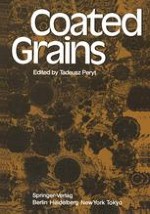1983 | OriginalPaper | Buchkapitel
Calcareous Ooids: A Synopsis
verfasst von : Detlev K. Richter
Erschienen in: Coated Grains
Verlag: Springer Berlin Heidelberg
Enthalten in: Professional Book Archive
Aktivieren Sie unsere intelligente Suche, um passende Fachinhalte oder Patente zu finden.
Wählen Sie Textabschnitte aus um mit Künstlicher Intelligenz passenden Patente zu finden. powered by
Markieren Sie Textabschnitte, um KI-gestützt weitere passende Inhalte zu finden. powered by
In 1855, Lyell gave an appropriate definition of “oolitic grains” (p. 12): “The variety of limestone called ‘oolite’ is composed of numerous small egg-like grains, resembling the roe of a fish, each of which has usually a small fragment of sand as a nucleus, around which concentric layers of calcareous matter have accumulated.” Also Sorby’s detailed description of calcareous “oolitic grains” from 1879 is still modern. He distinguished between the following three types: (1) “Concentric structure” characterizes the aragonitic oolitic grains of the hot springs at Karlsbad (CSSR) and of the modern sediments in the Bahamas. “Concentric” means, according to Sorby, layers of tangentially oriented aragonite crystals. (2) “Radiate structure” refers to the radial-fibrous structure of many calcitic fossil oolitic grains. Sorby recognized this structure as primary. This was neglected, at least for marine ooids, from Cayeux (1935) to Shearman et al. (1970) and has been reestablished by Simone (1974), Sandberg (1975) and Wilkinson and Landing (1978) only in the last ten years. (3) “Recrystallized structure” is developed in calcitized former aragonitic oolitic grains, in which “the larger irregular crystals formed in them have either no special orientation or are arranged with the principal axis converging towards the centre”.
